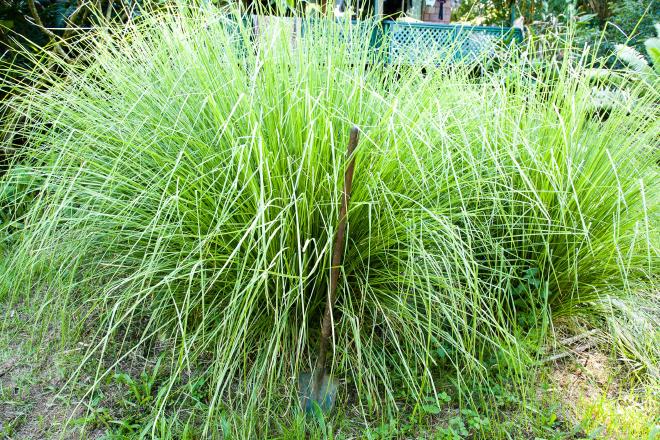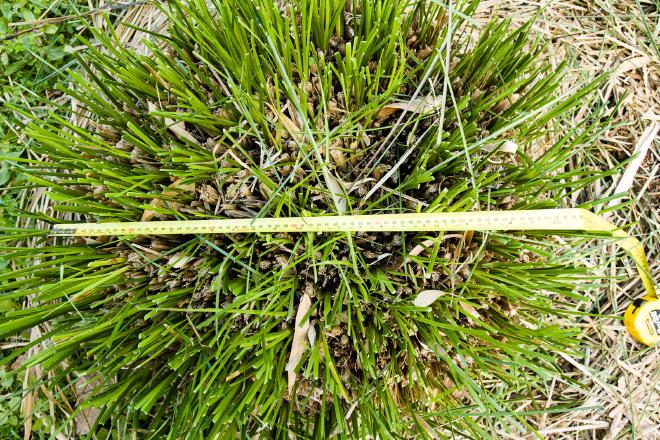Why Use Vetiver

A sterile clumping grass to 1-2m high and 1m wide usually used specifically in an unbroken hedgerow system for erosion control. The extremely deep vertical roots and stiff above-ground stems can increase shear strength of soil, slow water and force silt out behind it, backing up soil/organic matter and growing from higher nodes over time. Some hedges are at least 100 years old and have created 2m high terraces behind them.
Fast-growing, very drought-tolerant, frost-tolerant, salt-tolerant, inundation-tolerant, pH range-tolerant, heavy metal-tolerant, will regenerate from the crown after a fire, and can be cut 2-4 times a year for bulk sterile mulch. The roots are aromatic and used for essential oil. Leaves can be used for fodder, handicrafts, and roof thatching.
A good candidate for full sun regeneration as it will allow native plants to establish and when the Vetiver is shaded out it will weaken and die, therefore not crowding out native species in the long term. Vetiver can be planted within 50cm-1m of crops and will not compete due to the downward nature of the roots. Perfect for landslips, cuts, gullies, overflows, dam walls, or silt capture. It’s possible to repel cane toads from water sources when planted effectively.
Can be used to phytoremediate and bioaccumulate nitrogen, phosphorous, metals, antibiotics from grey and black water, either in reedbed or bunded systems or floated on pontoons and grown hydroponically.
Requires specific planting/propagation techniques and at least 50% sun. Contact to find out how, why, and where to plant Vetiver Grass or use the Guides below:
A Propagation and Planting pictorial guide for the subtropics can be found here.
A Frequently Asked Questions document can be found here.
An extensive range of applications in PDF form and other information can be found here.
Vetiver’s full botanical name is Chrysopogon zizanioides Roberty L. Vetiver originates in South India. In Australia it is registered as Monto Vetiver, which is the only Vetiver certified for various applications. Monto Vetiver is sterile, it flowers but set no seeds, so no weed potential. Because of its sterility it has to be subdivided from a mother plant. So each subdivision is genetically identical to each other and known as a clone. A special characteristics of clonal plants is they grow closely to each other, forming a thick and continuous hedge.
Dr. Paul Truong
